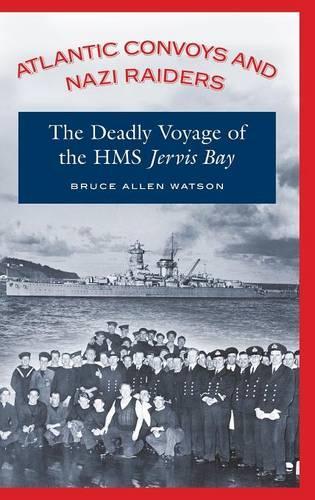
Atlantic Convoys and Nazi Raiders: The Deadly Voyage of HMS Jervis Bay
(Hardback)
Publishing Details
Atlantic Convoys and Nazi Raiders: The Deadly Voyage of HMS Jervis Bay
By (Author) Bruce A. Watson
Bloomsbury Publishing PLC
Praeger Publishers Inc
30th December 2005
United States
Classifications
General
Non Fiction
Second World War
Modern warfare
Maritime history
940.54293
Physical Properties
Hardback
216
Width 156mm, Height 235mm
482g
Description
In November of 1940, the German pocket battleship Admiral Scheer attacked British Convoy HX-84. The merchant cruiser HMS Jervis Bay, a converted passenger liner that was the convoy's only escortarmed only with antique 6-inch gunscharged the Nazi raider. While the Jervis Bay did not stand a chance of surviving the battle, her crew's fatalistic bravery inspired awe in all who witnessed the fight. Watson recounts how the Scheer's 11-inch guns turned the ship into a burning hulk in twenty-two minutes, but most of the convoy escaped. In November of 1940, the German pocket battleship Admiral Scheer attacked British Convoy HX-84. The Armed Merchant Cruiser HMS Jervis Bay, the only escort and mounting antique 6-inch guns, charged the Nazi raider. While the Jervis Bay did not stand a chance of surviving the battle, her crew's fatalistic bravery inspired awe in all who witnessed the fight. Watson describes how the Scheer's 11-inch guns turned the converted passenger liner into a burning hulk in twenty-two minutes, but most of the convoy escaped. How did this confrontation come to pass Both the necessity of arming a passenger liner and pretending it was a warship, and the building of the Admiral Scheer and her sister ships for the express purpose of commerce raiding, find their roots in the events, political decisions, re-armament polices, war plans, naval traditions, and blunders that arose in pre-war Britain and Germany. But this event holds a significance beyond the battle itself. The sinking of the Jervis Bay symbolizes the end of an era in naval warfare. The Armed Merchant Cruisers of the Second World War inherited a long, sometimes noble and sometimes ignoble history. Long employed in blockade or patrol duty, armed merchant cruisers ventured out for the first time to escort convoys, a defensive duty for which they were eminently unsuited, and for which the Jervis Bay paid a fearful price.
Author Bio
Bruce Allen Watsonis Professor Emeritus of Art History and History at Diablo Valley College. He is the author of seven books, including Exit Rommel: The Tunisian Campaign (Praeger, 1999), and Sieges: A Comparative Study (Praeger, 1993).
